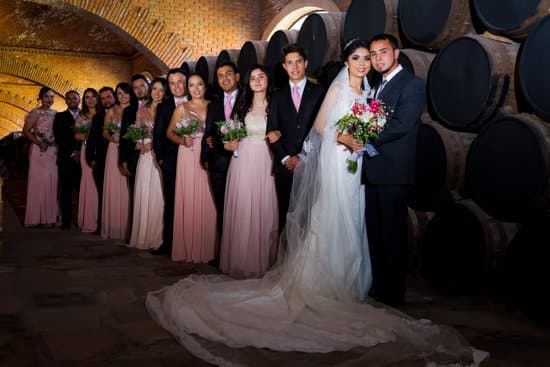Creating your own wedding dress can be a fulfilling endeavor that allows you to showcase your personal style and creativity on one of the most important days of your life. In this article, we will explore the steps and considerations involved in designing and sewing your own dream wedding dress. From selecting the perfect fabric to adding unique details, we will guide you through the process of bringing your vision to life.
Designing and creating your own wedding dress allows you to have a garment that is truly tailored to your preferences, body shape, and personality. It provides an opportunity for you to express yourself in a way that is not possible with off-the-rack dresses. Whether you are a seasoned seamstress or someone who is new to sewing, this article will provide valuable insights and tips to help you bring your dream wedding dress to reality.
Throughout the following sections, we will discuss essential aspects such as choosing the right fabric, finding design inspiration, taking precise measurements, mastering sewing techniques, adding special details, troubleshooting common challenges, and making final touches and fittings. By the end of this journey, you will embrace the satisfaction and pride of wearing a dress that you created yourself – a garment that symbolizes not only love but also dedication and creativity.
Choosing the Right Fabric
When creating your own wedding dress, one of the most crucial decisions you’ll make is choosing the right fabric. The material you select will not only impact the overall look and feel of your dress but also how comfortable it is to wear on your special day. Here are some tips to help you navigate the process of selecting the perfect fabric for your wedding dress:
- Consider the season: If you’re having a summer wedding, lightweight and breathable fabrics like chiffon, organza, or silk crepe may be ideal. For winter weddings, heavier fabrics such as satin, silk mikado, or velvet can add warmth and elegance to your gown.
- Think about silhouette and structure: The style of dress you envision will also influence the type of fabric you choose. Soft and flowy fabrics work well for bohemian or ethereal looks, while more structured materials like taffeta or duchess satin are suitable for a traditional ballgown silhouette.
- Don’t forget about comfort: Since you’ll be wearing your wedding dress for an extended period, it’s important to consider how comfortable the fabric will be against your skin. Avoid fabrics that may cause irritation or discomfort, especially if you have sensitive skin.
By carefully considering these tips and doing thorough research on different fabric options, you can ensure that the material you choose aligns with your vision for your dream wedding dress.
Whether it’s a simple cotton gown or an elaborate lace creation, understanding how to create your own wedding dress starts with selecting the perfect fabric that brings your vision to life. With a clear idea of the look and feel you want to achieve and armed with knowledge about different fabric options, you’ll be one step closer to making your dream dress a reality.
Design Inspiration
When it comes to creating your own wedding dress, one of the most exciting and daunting tasks is finding the inspiration for the design. Whether you have a clear vision in mind or are starting from scratch, there are countless ways to gather ideas and bring your dream dress to life.
One way to find inspiration is by looking at bridal magazines, websites, and social media platforms for the latest trends and styles. Additionally, attending bridal fashion shows or visiting bridal boutiques can also provide you with valuable insight into different design elements and silhouettes.
Apart from external sources, drawing inspiration from personal experiences, cultural heritage, or even nature can add a unique touch to your wedding dress design. For example, incorporating lace patterns reminiscent of your grandmother’s wedding gown or using floral motifs inspired by a meaningful location can infuse sentimental value into your dress.
It’s important to take the time to gather various inspirations and create a vision board that reflects the aesthetic and style you want for your dream wedding dress.
Once you have gathered sufficient inspiration, it’s time to start sketching out your design ideas. Whether you’re working with a professional designer or going the DIY route, having a clear vision of what you want will make the entire process much smoother.
Additionally, consider consulting with a seamstress or tailor who can provide valuable insights on which designs will best complement your body type. Ultimately, finding design inspiration is about exploring different avenues and allowing yourself the freedom to be creative in envisioning the perfect wedding dress for your special day.
Taking Accurate Measurements
When it comes to creating your own wedding dress, one of the most important steps is taking accurate measurements. Without precise measurements, it can be difficult to achieve the perfect fit for your dream dress. Here are some tips for ensuring that you get the measurements right before you start sewing your gown:
- Use a soft measuring tape: When taking your measurements, use a soft measuring tape that can easily wrap around your body without causing any discomfort.
- Have someone assist you: It’s best to have someone help you with taking your measurements to ensure that they are as accurate as possible. They can also help with hard-to-reach areas like the back and shoulders.
- Take multiple measurements: Don’t rely on just one set of measurements. Take multiple measurements of each area to ensure accuracy, and double-check them to make sure they are consistent.
Sewing Techniques
Once you have taken accurate measurements for your wedding dress, it’s time to delve into the sewing techniques needed to bring your vision to life. Whether you are a beginner or an experienced seamstress, creating a wedding dress requires specific skills and methods. Here are some sewing techniques to consider when creating your own wedding dress:
- Choosing the right stitches: Depending on the fabric and design of your dress, you’ll need to select the appropriate stitches for sewing seams, hems, and embellishments.
- Fitting and adjusting: As you sew different parts of the dress together, it’s essential to continuously try on the garment and make any necessary adjustments for a perfect fit.
- Handling delicate fabrics: If your dress features delicate fabrics such as lace or silk, it’s important to use special techniques for handling and sewing these materials without causing damage.
Sewing Techniques
Choosing the Right Sewing Technique
When it comes to creating your own wedding dress, choosing the right sewing technique is crucial. There are various methods to consider, and each has its own unique characteristics. From hand-sewing to using a sewing machine, it’s important to weigh the pros and cons of each technique before deciding which one is best for your project. Hand-sewing, for example, allows for greater control and precision, while using a sewing machine can save time and ensure consistent stitching.
Developing Your Sewing Skills
Regardless of the sewing technique you choose, honing your sewing skills is essential to create a wedding dress that meets your expectations. If you’re new to sewing, it’s advisable to practice basic stitches and techniques before diving into such a significant project. Taking sewing classes or seeking guidance from experienced seamstresses can also help you develop the necessary skills for creating a beautiful and well-constructed dress.
Mastering Couture Techniques
For those aiming for an intricate and high-quality wedding gown, delving into couture sewing techniques may be necessary. Couture techniques involve intricate hand-stitching, fine finishes, and attention to detail that elevate the overall look and feel of the garment. While mastering these techniques may require more time and effort, the result will undoubtedly be a stunning wedding dress that reflects true craftsmanship.
By considering different sewing methods and diligently improving your skills, you can ensure that the process of creating your own wedding dress is both rewarding and successful.
Adding Special Details
Creating your own wedding dress gives you the opportunity to add special details and unique embellishments that truly reflect your personality and style. From intricate lace patterns to delicate beadwork, there are countless ways to make your dress one-of-a-kind.
Choosing the Right Embellishments
When adding special details to your wedding dress, it’s important to carefully consider the types of embellishments that will best complement the overall design. Beading, embroidery, appliques, and lace are popular choices for adding a touch of elegance and sophistication. Consider the theme of your wedding and the style of your dress when choosing embellishments to ensure they enhance the overall look.
Incorporating Personal Touches
In addition to traditional embellishments, incorporating personal touches into your wedding dress can make it even more meaningful. For example, you could add a small patch of fabric from a family heirloom or embroider a meaningful phrase or date inside the gown. These sentimental details not only make the dress unique but also create lasting memories that you will cherish on your special day.
Working With a Professional
If you’re not confident in your ability to add these details yourself, consider working with a professional seamstress or designer who specializes in creating custom wedding attire. They can help bring your vision to life and ensure that every detail is executed flawlessly. Working with an experienced professional can also alleviate some of the stress and pressure associated with creating such an important garment.
Adding special details and unique embellishments is an exciting part of creating your own wedding dress. Whether it’s intricate beading or sentimental touches, each element adds to the beauty and significance of your gown. Embrace this process as an opportunity to showcase your individuality and create a dress that truly reflects who you are as a bride.
Troubleshooting and Problem-Solving
Creating your own wedding dress can be an incredibly rewarding experience, allowing you to have a one-of-a-kind gown that reflects your personal style and vision. However, it’s important to be prepared for some challenges and mistakes along the way. From fabric mishaps to fitting issues, here are some tips on troubleshooting and problem-solving when creating your own wedding dress.
One common challenge when creating your own wedding dress is selecting the right fabric. If you find that the fabric you initially chose is not working as expected, don’t panic. Consider consulting with a fabric expert or seamstress for advice on alternative options. Additionally, if you encounter sewing problems such as uneven seams or puckering, take the time to carefully unpick stitches and re-sew them to ensure a flawless finish.
Another common mistake when making your own wedding dress is incorrect measurements. If you find that the fit isn’t quite right, don’t hesitate to make adjustments as needed. For example, if the bodice is too loose or too tight, consider altering the pattern and making a muslin mock-up for further adjustments before cutting into your fabric.
Lastly, adding special details and embellishments to your dress can sometimes present challenges. Whether it’s struggling with intricate beading or struggling with appliqué placement, take your time and seek out tutorials or guidance from experienced sewers on how to achieve the look you want. Remember, patience and perseverance are key when troubleshooting and problem-solving during the creation of your own wedding dress.
By being prepared for potential challenges and mistakes along the way, you can effectively troubleshoot any issues that arise while creating your dream wedding dress. The satisfaction of wearing a gown that you put your heart and soul into will far outweigh any hiccups encountered during the process of bringing it to life.
Final Touches and Fittings
Once you have completed the construction of your own wedding dress, it’s time for the final touches and fittings to ensure that the final product is exactly what you envisioned. This is a crucial step in the process as it allows you to make any necessary alterations to achieve the perfect fit and look for your special day.
During the final fitting, it’s important to pay attention to how the dress feels and looks on your body. Take note of any areas that may feel too tight or too loose, as well as any details that may not be sitting quite right. This will guide you in making the necessary adjustments to ensure that the dress fits flawlessly.
It’s also essential to consider how you will move and feel in your dress throughout the wedding day. Make sure that you can sit, walk, and dance comfortably in your custom creation. If there are any restrictions or discomfort, this is the time to address them and make the appropriate modifications.
Finally, embrace this final fitting as a moment of pride and satisfaction – not only have you created a beautiful wedding dress, but you have also ensured that it is tailored perfectly to suit you. This is an accomplishment worth celebrating as you prepare to walk down the aisle in a gown that truly reflects your style and personality.
| Final Touches | Fittings |
|---|---|
| Ensuring perfect fit | Making necessary adjustments |
| Considering comfort and mobility | Addressing restrictions or discomfort |
| Celebrating personal achievement | Reflecting style and personality |
Conclusion
In conclusion, creating your own wedding dress is a truly special and rewarding experience. By following the tips and guidelines for choosing fabric, finding design inspiration, taking accurate measurements, mastering sewing techniques, adding personal details, and troubleshooting common challenges, you can achieve the dream of wearing a dress that truly reflects your individual style and personality on your special day.
The satisfaction and pride of wearing a dress you created yourself cannot be overstated. Not only will you have a one-of-a-kind gown that perfectly fits your vision, but you will also have the memories of the time and effort you put into making it. From the initial spark of inspiration to the final fitting, every step in creating your own wedding dress is an opportunity to infuse your gown with love and personal significance.
So if you’re considering taking on the challenge of creating your own wedding dress, remember that with dedication and attention to detail, it is absolutely achievable. The process may come with its fair share of challenges, but the end result will be a dress that holds immense sentimental value for years to come. With careful planning and perseverance, you can bring your vision to life and walk down the aisle in a gown that is truly uniquely yours.
Frequently Asked Questions
How to Design and Make Your Own Wedding Dress?
Designing and making your own wedding dress can be a rewarding and personal experience. Start by sketching out your ideas and finding inspiration from bridal magazines or online resources.
Then, take accurate measurements and choose the right fabric for your design. If you have sewing skills, you can begin constructing the dress, or you may consider hiring a professional seamstress to bring your vision to life.
How Hard Is It to Make a Wedding Dress?
Making a wedding dress can be a challenging endeavor, especially if you do not have much experience in sewing or garment construction. It requires careful attention to detail, patience, and precision to ensure that the dress turns out as envisioned.
Depending on the complexity of the design, it may also require a significant time commitment. However, with dedication and practice, it is definitely possible to make your own wedding dress.
Is It Cheaper to Make a Wedding Dress or Buy One?
Whether it is cheaper to make or buy a wedding dress largely depends on various factors such as material costs, labor, and design intricacy. In some cases, making a wedding dress may be more cost-effective, especially if you are able to source affordable fabrics and trimmings or already possess the necessary sewing skills.
On the other hand, purchasing a ready-made dress during a sale or opting for a simpler design may also offer savings compared to making one from scratch. Ultimately, it is important to carefully weigh your options and consider both financial and personal preferences when deciding whether to make or buy a wedding dress.

I have been involved in marriages for over 20 years helping couples and singles understand more about them.





